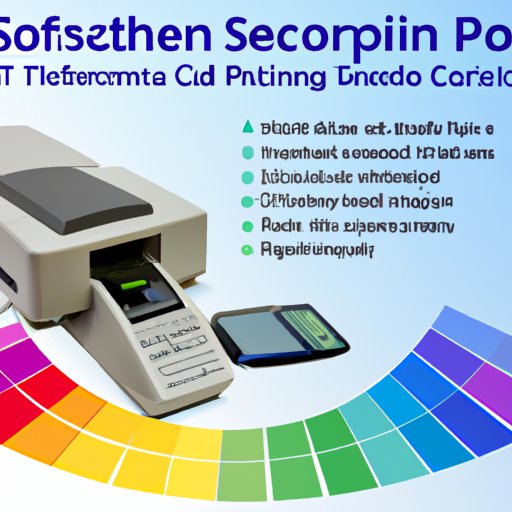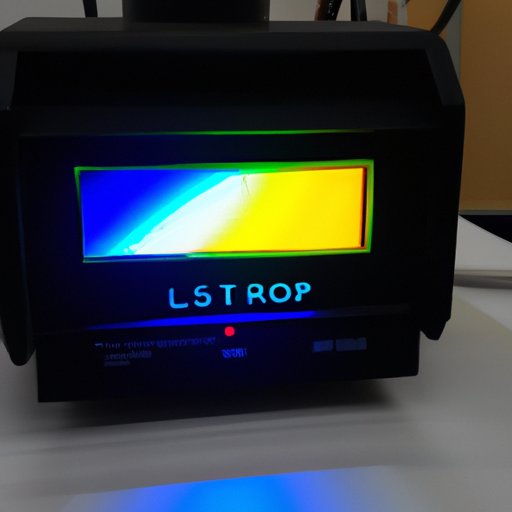Introduction
Spectrophotometry is a scientific technique used to measure the amount of light absorbed or transmitted by a sample. This measurement is known as absorbance or transmittance and is expressed as a numerical value from 0 to 1. The data collected from spectrophotometric measurements can be used to identify and quantify various components in a sample. Spectrophotometry is widely used in research, industry, and medical settings for a variety of purposes.
Explaining Spectrophotometry: How Does a Spectrophotometer Work?
A spectrophotometer is an instrument that measures the absorbance or transmittance of light through a sample. It consists of three main components: a light source, a sample chamber, and a detector. The light source emits light at a specific wavelength, which passes through the sample chamber and is then detected by the detector. The detector measures how much light is absorbed or transmitted by the sample and produces a numerical result.
The Science Behind Spectrophotometry
Spectrophotometry is based on the principle that certain molecules absorb specific wavelengths of light. When light passes through a sample, the molecules in the sample absorb some of the light energy. The amount of light absorbed depends on the concentration of molecules in the sample. By measuring the amount of light absorbed, scientists can determine the concentration of molecules in a sample.

A Comprehensive Guide to Spectrophotometer Technology
To understand how a spectrophotometer works, it’s important to know the components of the device. Each component plays an important role in the accuracy and reliability of the measurements taken.
Understanding the Components of a Spectrophotometer
The most important components of a spectrophotometer are the light source, the sample chamber, and the detector. The light source emits light of a specific wavelength, which is then passed through the sample chamber. The sample chamber contains the sample, which absorbs some of the light energy. The detector measures the amount of light that is absorbed and produces a numerical result.
Analytical Techniques Using Spectrophotometers
Spectrophotometers are used in a variety of analytical techniques, such as colorimetry, fluorimetry, and nephelometry. Colorimetry measures the intensity of colors in a sample. Fluorimetry measures the fluorescence of a sample. Nephelometry measures the turbidity of a sample. These techniques are used to analyze samples in research, industry, and medical settings.
Conclusion
Spectrophotometry is an important scientific technique used to measure the absorbance or transmittance of light. It is based on the principle that certain molecules absorb specific wavelengths of light. By understanding the components of a spectrophotometer and the analytical techniques used, scientists can accurately identify and quantify various components in a sample. Spectrophotometry is widely used in research, industry, and medical settings for a variety of purposes.
Summary of Key Points
This article provides a comprehensive guide to spectrophotometry and how does a spectrophotometer work. It explains the basic principles and applications of spectrophotometry, along with the science behind it. It also explores the components of a spectrophotometer and analytical techniques using spectrophotometers.
Recommendations for Further Reading
For further information on spectrophotometry, please refer to the following resources:
• The Basics of Spectrophotometry (https://www.thermofisher.com/us/en/home/life-science/protein-biology/protein-biology-learning-center/protein-biology-resource-library/pierce-protein-methods/the-basics-of-spectrophotometry.html)
• Spectrophotometry (https://www.chemguide.co.uk/analysis/uvvisible/background.html)
• Spectrophotometers (https://www.olympus-ims.
(Note: Is this article not meeting your expectations? Do you have knowledge or insights to share? Unlock new opportunities and expand your reach by joining our authors team. Click Registration to join us and share your expertise with our readers.)
